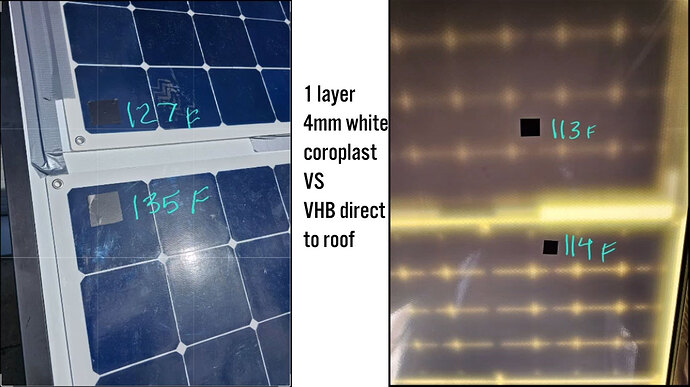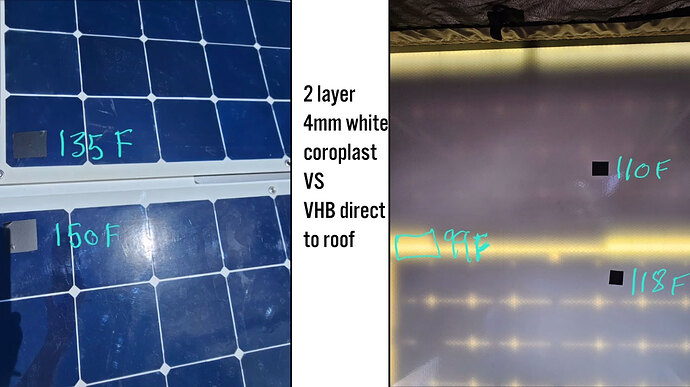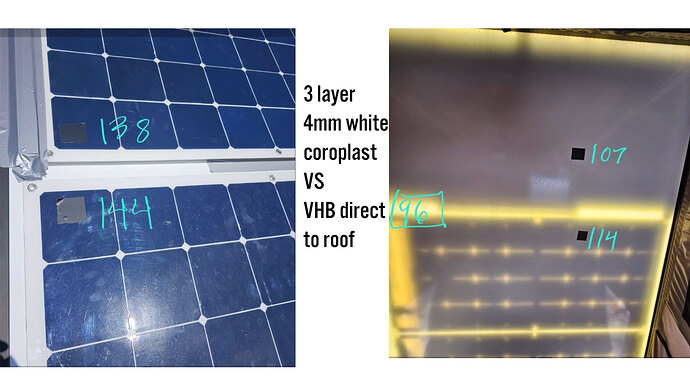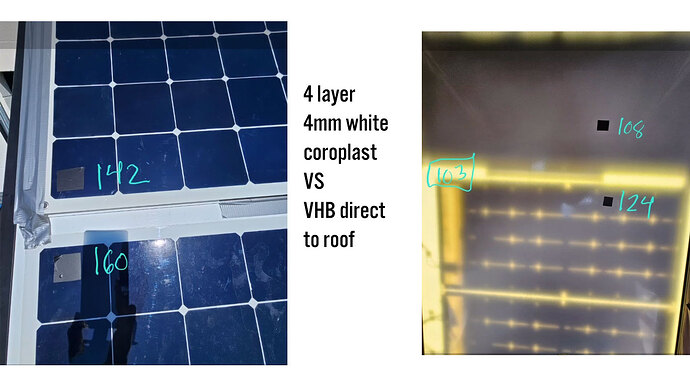Update: I got some 4mm coroplast from a local plastics dealer. I wanted thicker, but this was all they had. The concept here is to create an air gap between the panels and the roof. The coroplast channels are oriented so convection would carry the hot air out toward the apex of the tent . Because the ambient temperature is going up as the day continues. It’s about 60F ambient today. This is far from a highly controlled experiment and I’m a graduate school dropout so take this whole thing for what it is.
First experiment was 1 layer of coroplast between the panel and the roof. I allowed 20 minutes of sun to let temps equalize. No appreciable temperature drop inside. Some temperature drop outside. This makes me seriously doubt the Youtube video crowd advocating for 1 layer of thin coroplast as a cooling solution - although the panel is cooler than the unspaced panel. Not noted in this first picture, the untreated roof temperature was ~99F.
Second experiment was 2 layers of coroplast between the panel and roof. Allowed for 20 minutes of sun to let temps equalize. Improved but still significantly hotter than without panels on the roof.
Third experiment was 3 layers of coroplast between the panel and roof. Allowed for 20 minutes of sun to let temps equalize.
Fourth Experiment was 4 layers, same conditions.
Summarizing the Coroplast experiments:
RTD: Inside roof temperature difference between untreated (bare) and coroplast treated area.
IRPTD: Inside roof temperature difference between untreated solar and coroplast solar
OPTD: Outside temperature difference between treated and untreated area.
- RTD: ~14 degree. IRPTD:1 degrees OPTD: ~8 degrees.
- RTD: ~10 degrees. IRPTD:8 degrees OPTD: ~15 degrees.
- RTD : ~11 degrees. IRPTD: 7 degrees OPTD: ~6 degrees.
- RTD: ~7 degrees. IRPTD:16 degrees OPTD: ~18 degrees.
All in all kind of hard to read, but basically small effects inside (<10%) with diminishing returns somewhere in the neighborhood of 3-4 layers. I’m not sure what to make of the huge difference in outside panel temps for the 4 layer setup. Kind of anomalous.
An interesting note is that polyethylene (the plastic coroplast is made from) is generally transparent to heat energy (3-12umish (very rough numbers)). So the effect here is mostly likely heat radiating or conducting to the surface below, the reduction in heat is due to the spacing/inverse square law and perhaps some small cooling effect from the air channels.
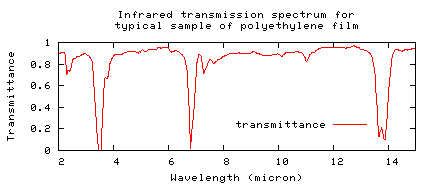
EDIT: I did some tests including a sandwiched piece of woven radiant barrier material, nothing impressive happened.
